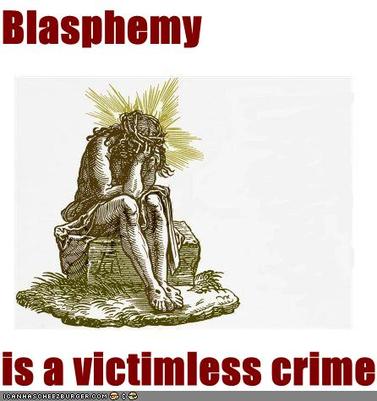The Inexplicable Final Act of X (Part 1 of 3)

The majority of translation assignments are pretty routine and mundane. You tackle them, deliver them, invoice the client, sip some wine or sake, then like a stoic samurai stand in ready position to tackle the next assignment. Some assignments however will haunt you for the rest of your life with endless questions. For example, translating the diary of a man who murdered his entire family. Even after 20 years.
Before I proceed however, allow me to step back several months to December 2014. While doing online research for a particular assignment, I accidentally discovered an irrelevant yet rather attention-grabbing website. murderpedia.org defines itself as "a free online encyclopedic dictionary of murderers and the largest database about serial killers and mass murderers around the world." Who would have created such a website in the first place? It catalogs 5,799 murder cases committed by men and 1,023 ones committed by women. (Men, behave!) Initially I thought, wow, this website must be a valuable resource for fiction writers or scriptwriters for "Criminal Minds" on CBS that has so many fans, including my wife and a niece. Out of curiosity, I entered the name of one of two mass murderers I got to "know" from my work as a translator and interpreter — let's call him "X" for now. Lo and behold, X's name and the case is completely listed with all the details.
Previously I had never thought that I would write about the case of X. As a translator, by default, I am bound by a blanket and strict confidentiality clause that I voluntarily imposed upon myself, even if a client does not ask me to sign any Non-disclosure Agreement (NDA). Client confidentiality is a given, period. Now, upon discovering that murderpedia.org has featured the case of X with all details as reported in The New York Times and The Los Angeles Times in 1995 (as quoted on the site), the case had entered the public domain — by means totally beyond my control. Anyone with a computer and internet connection will be able to read the case in detail, complete with X's actual name, his victims' names, and where they lived, etcetera. Even if an NDA for this case does exist (it does not), the public domain exposure definitely cancels, nulls and voids any confidentiality clause. For how can something be kept confidential, if it has been published in the public domain and by two national newspapers?
In any case, X himself had died in 1995. Most importantly, the following case of X does not contain any trade secret, insider information, or any classified information that in any way may be a direct, or indirect, threat to public safety and/or national security. Being a stickler for principles, however, I am still going to obscure certain details and not going to reveal X's identity. Why? He is deceased, yes, but I'll have to live with my conscience for the rest of my life. First, who knows, X may still have some relatives who may get upset if his identity is revealed. I have to be sensitive to their feelings. Second, one of the most sacred principles in our American criminal justice system is that a person is legally presumed innocent until proven guilty. Due to his eventual death, X had never been tried before a court of law. Therefore I would prefer to err on the side of caution by not revealing his identity. I will also *not* reveal anything that has not been published in the reports of The New York Times and The Los Angeles Times quoted on the murderpedia.org website. Without much ado, let's get back to the case of X. It's important to note this post is not about the person, but about what can be learned from the case.
About twenty years ago, in the summer of 1995, before the era of emails, I received a call from a translation agency desperately inquiring whether I would be available to translate the diary of an Indonesian man suspected of murdering his entire family. "What?," I asked in disbelief. The Project Manager kept talking for several minutes but nothing of what she said afterwards seemed to register in my brain, for I was in a state of shock. I don't even remember whether I said yes or no. In any case, the next day a FedEx package arrived with photocopies of X's diary pages.
[To be continued.]
Johannes Tan, Indonesian Translator & Conference Interpreter
Before I proceed however, allow me to step back several months to December 2014. While doing online research for a particular assignment, I accidentally discovered an irrelevant yet rather attention-grabbing website. murderpedia.org defines itself as "a free online encyclopedic dictionary of murderers and the largest database about serial killers and mass murderers around the world." Who would have created such a website in the first place? It catalogs 5,799 murder cases committed by men and 1,023 ones committed by women. (Men, behave!) Initially I thought, wow, this website must be a valuable resource for fiction writers or scriptwriters for "Criminal Minds" on CBS that has so many fans, including my wife and a niece. Out of curiosity, I entered the name of one of two mass murderers I got to "know" from my work as a translator and interpreter — let's call him "X" for now. Lo and behold, X's name and the case is completely listed with all the details.
Previously I had never thought that I would write about the case of X. As a translator, by default, I am bound by a blanket and strict confidentiality clause that I voluntarily imposed upon myself, even if a client does not ask me to sign any Non-disclosure Agreement (NDA). Client confidentiality is a given, period. Now, upon discovering that murderpedia.org has featured the case of X with all details as reported in The New York Times and The Los Angeles Times in 1995 (as quoted on the site), the case had entered the public domain — by means totally beyond my control. Anyone with a computer and internet connection will be able to read the case in detail, complete with X's actual name, his victims' names, and where they lived, etcetera. Even if an NDA for this case does exist (it does not), the public domain exposure definitely cancels, nulls and voids any confidentiality clause. For how can something be kept confidential, if it has been published in the public domain and by two national newspapers?
In any case, X himself had died in 1995. Most importantly, the following case of X does not contain any trade secret, insider information, or any classified information that in any way may be a direct, or indirect, threat to public safety and/or national security. Being a stickler for principles, however, I am still going to obscure certain details and not going to reveal X's identity. Why? He is deceased, yes, but I'll have to live with my conscience for the rest of my life. First, who knows, X may still have some relatives who may get upset if his identity is revealed. I have to be sensitive to their feelings. Second, one of the most sacred principles in our American criminal justice system is that a person is legally presumed innocent until proven guilty. Due to his eventual death, X had never been tried before a court of law. Therefore I would prefer to err on the side of caution by not revealing his identity. I will also *not* reveal anything that has not been published in the reports of The New York Times and The Los Angeles Times quoted on the murderpedia.org website. Without much ado, let's get back to the case of X. It's important to note this post is not about the person, but about what can be learned from the case.
About twenty years ago, in the summer of 1995, before the era of emails, I received a call from a translation agency desperately inquiring whether I would be available to translate the diary of an Indonesian man suspected of murdering his entire family. "What?," I asked in disbelief. The Project Manager kept talking for several minutes but nothing of what she said afterwards seemed to register in my brain, for I was in a state of shock. I don't even remember whether I said yes or no. In any case, the next day a FedEx package arrived with photocopies of X's diary pages.
[To be continued.]
Johannes Tan, Indonesian Translator & Conference Interpreter



 RSS Feed
RSS Feed